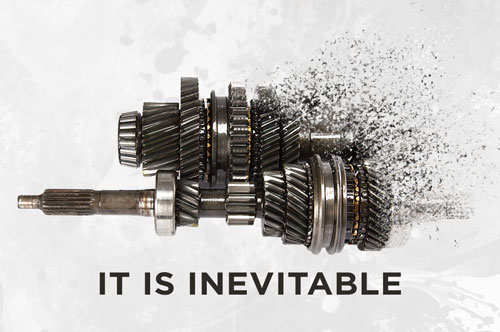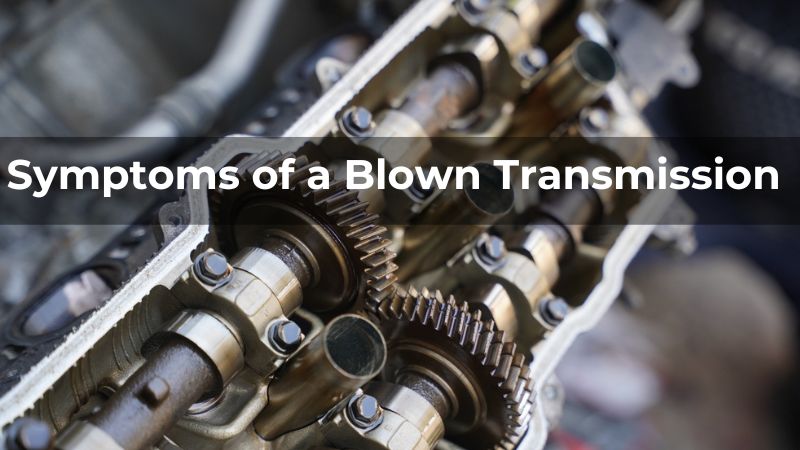To fix a blown transmission, you need to either repair or replace the damaged components professionally. Experiencing a blown transmission in your vehicle can be a costly and troublesome situation.
A blown transmission can manifest through issues like slipping gears, unusual noises, or leaking fluids. To address this problem, you will need to assess the severity of the damage by consulting a mechanic. They will diagnose the issue and provide solutions such as repairing the transmission components or opting for a complete replacement.
In many cases, fixing a blown transmission involves a complex process that requires specialized skill and expertise. It is essential to address this issue promptly to avoid further damage to your vehicle and ensure safe and efficient operation on the road.

Credit: generaltransmissionreno.com
Identifying The Issue
If you’ve been experiencing problems with your vehicle, such as strange noises, difficulty shifting gears, or leaking fluid, there is a chance that you may have a blown transmission. Recognizing the signs of a blown transmission early on can save you from costly repairs down the road. In this section, we will discuss how to identify if your transmission is indeed blown and what diagnostic checks you can perform to confirm the issue.
Recognizing Signs Of A Blown Transmission
When it comes to identifying a blown transmission, there are several key signs to look out for:
- Strange noises: Pay attention to any grinding, whining, or clunking sounds coming from the transmission. These can indicate internal damage.
- Fluid leaks: Transmission fluid is essential for the proper functioning of the transmission. If you notice leaking fluid, it could be a sign of a blown seal or gasket.
- Burning smell: A burnt odor can be a result of overheating transmission fluid. This can occur when the transmission is not working properly.
- Sudden shifting issues: If you are having trouble shifting gears smoothly or experiencing a delay in gear engagement, this could be a sign of a blown transmission.
- Dashboard warning lights: Check for any warning lights on your dashboard, such as the “Check Engine” light or the transmission temperature warning light. These lights can indicate a problem with the transmission.
Diagnostic Checks
Once you have recognized the signs of a blown transmission, it’s important to perform some diagnostic checks to confirm the issue:
- Check the transmission fluid level and condition: A low fluid level or dirty, burnt-looking fluid can indicate a problem with the transmission.
- Inspect for leaks: Look for any signs of fluid leaks under the vehicle. You may need to use a flashlight to check for leaks in hard-to-see areas.
- Scan for error codes: Use an OBD-II scanner to check for any error codes related to the transmission. These codes can provide valuable information about the problem.
- Consult a professional mechanic: If you are unsure about performing the diagnostic checks yourself or if the issue persists, it is best to consult a qualified mechanic who specializes in transmission repairs.
By recognizing the signs of a blown transmission and performing diagnostic checks, you can have a better understanding of the issue at hand. Remember, early detection of a blown transmission can prevent further damage and potentially save you from more expensive repairs in the future.

Credit: aamcocentralflorida.com
Assessing Repair Options
When facing a blown transmission, the first step is to effectively assess your repair options. This crucial process involves weighing cost considerations and deciding between transmission repair and replacement.
Cost Considerations
Before making a decision, consider your budget and the extent of the transmission damage. Getting estimates from reputable mechanics is essential.
Transmission Repair Vs. Replacement
For some minor issues, a repair may be sufficient and cost-effective. In contrast, severe damage might call for a full replacement.
Assess the overall condition of your vehicle to determine which option is more feasible in the long run. Consulting with professionals can provide valuable insight.
Selecting A Professional Service
Researching Service Providers
When fixing a blown transmission, extensive research is imperative to find a reliable service provider.
- Check online reviews for customer feedback.
- Verify the credentials and experience of the mechanics.
- Ensure the shop specializes in transmission repairs.
Understanding Warranties And Guarantees
Always inquire about the warranties and guarantees offered by the service provider.
- Ask for details on the parts warranty and labor guarantee.
- Ensure the warranty is clearly outlined in writing.
- Understand the conditions that may void the warranty.
Diy Repair Considerations
If you are faced with a blown transmission, you might be considering fixing it yourself to save money. However, DIY transmission repairs require careful consideration, as this complex task can be challenging even for experienced car enthusiasts. This section will guide you through the crucial factors to consider when contemplating a DIY transmission repair.
Assessing Personal Skill Level
Before jumping into a DIY transmission repair, it’s important to honestly assess your personal skill level. Working on a transmission requires a good understanding of car mechanics and a certain level of expertise. If you have experience working on cars and feel confident in your abilities, tackling a blown transmission repair on your own may be a viable option for you. However, if you are a novice or lack the necessary knowledge, it is advised to seek professional help to avoid complicating the issue further.
Tools And Resources
Having the right tools and resources is essential for a successful DIY transmission repair. Here are some key items you’ll need:
- Transmission fluid pump: A pump to remove the old transmission fluid and refill it with fresh fluid.
- Jacks and jack stands: These will help you safely raise your vehicle off the ground.
- Socket set: A comprehensive set of sockets in various sizes for removing bolts and nuts.
- Torque wrench: A torque wrench is necessary to achieve proper torque specifications when tightening bolts.
- Transmission repair manual: This valuable resource will provide detailed instructions specific to your vehicle’s make and model.
Additionally, you should ensure you have access to a clean and well-lit workspace, as well as protective gear such as gloves and safety goggles. It’s also worth considering reaching out to online forums and communities dedicated to car enthusiasts. These platforms can provide valuable insights, tips, and guidance from experienced individuals who have tackled similar repairs.
Preventative Maintenance
Preventative maintenance is crucial to prolonging the lifespan of your transmission and avoiding costly repairs. By following simple practices and checks, you can prevent potential issues and maintain the health of your transmission.
Transmission Fluid Checks
Regularly checking and changing the transmission fluid is vital to the longevity of your transmission. Transmission fluid acts as a lubricant, keeping the internal components running smoothly. It’s recommended to check the transmission fluid level at least every 30,000 miles. Dirty or low fluid levels can lead to excessive heat and friction within the transmission, causing damage over time.
Driving Habits
Your driving habits also play a significant role in the health of your transmission. Heavy acceleration, sudden braking, and towing heavy loads can put added strain on the transmission, leading to premature wear and tear. Maintaining smooth, consistent driving and avoiding sudden shifts between gears can help preserve the transmission’s integrity.

Credit: www.electronicshub.org
Frequently Asked Questions For How To Fix Blown Transmission
Is It Worth Fixing A Blown Transmission?
Fixing a blown transmission can be worth it if the cost is significantly less than replacing it with a new one. Consider the age and condition of your vehicle as well as the benefits of repairing it. Seek professional advice to make an informed decision.
What Happens When Transmission Blows?
When a transmission blows, it can result in total failure, causing the vehicle to lose power, have trouble shifting gears, or even stop moving altogether. Repairing or replacing the transmission is necessary to get the vehicle back on the road.
Can You Fix A Transmission Without Replacing It?
Yes, transmission repairs can be made without always needing to replace it, depending on the issue.
Can You Still Drive With A Blown Transmission?
Driving with a blown transmission is not recommended as it can cause further damage to your vehicle.
What Are The Signs Of A Blown Transmission?
Common signs include slipping gears, burning smell, fluid leaks, and strange noises while driving.
Can A Blown Transmission Be Repaired?
It depends on the extent of damage. In some cases, repairs may be possible, but a complete replacement might be needed.
How Much Does It Cost To Fix A Blown Transmission?
The cost varies widely based on the severity of the damage, type of vehicle, and location. Average cost ranges from $1800 to $3500.
Conclusion
To summarize, fixing a blown transmission is a complex and costly task, but with the right approach, it can be done successfully. By paying attention to warning signs, properly maintaining your vehicle, and seeking professional help when needed, you can save yourself from unnecessary stress and expenses.
Remember, prevention is key, so make sure to follow the recommended maintenance schedule for your transmission to avoid any future issues. Keep your vehicle running smoothly, and enjoy the peace of mind that comes with a well-maintained transmission.
- How Much Does a Ford 9N Tractor Weigh - May 20, 2024
- How Many of My Exact Car were Made: Uncovering the Rarity - May 20, 2024
- How to Find Out What Someone Drives: Discover the Truth - May 20, 2024



